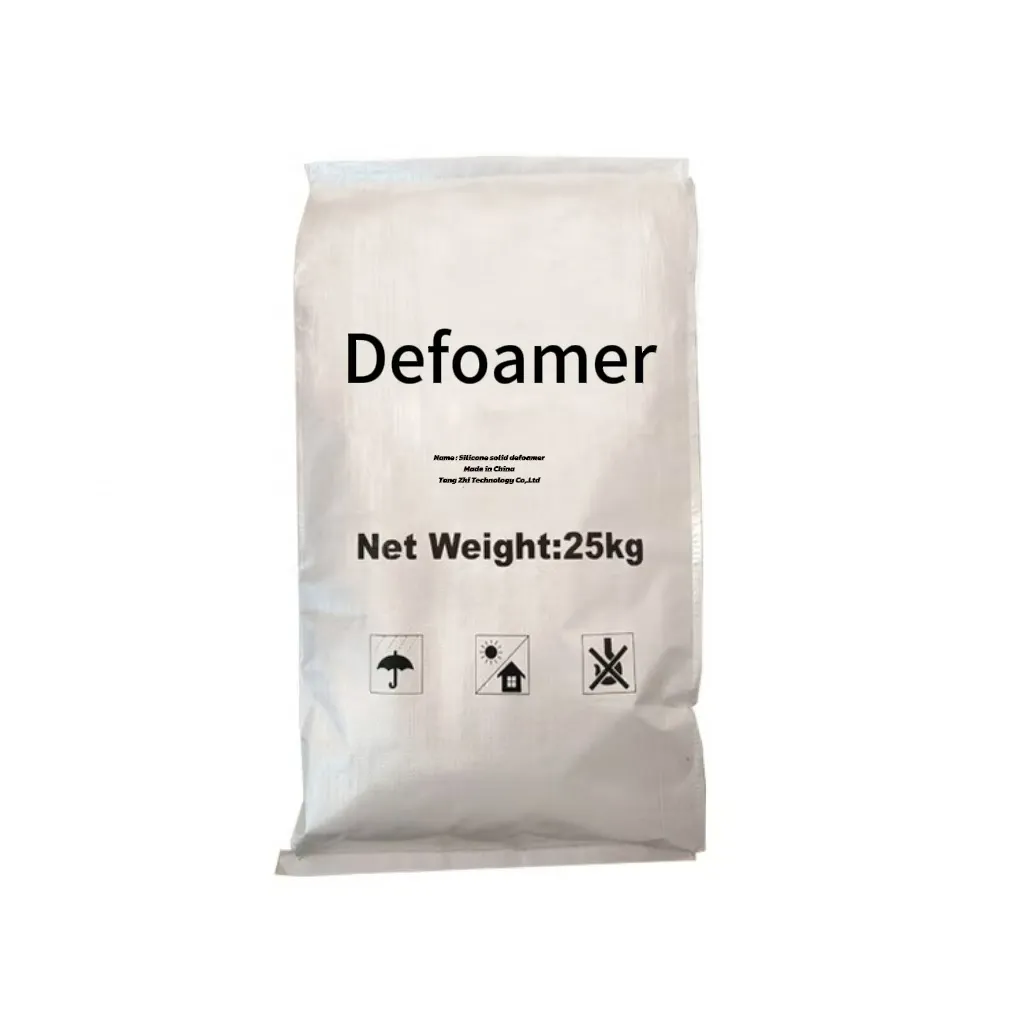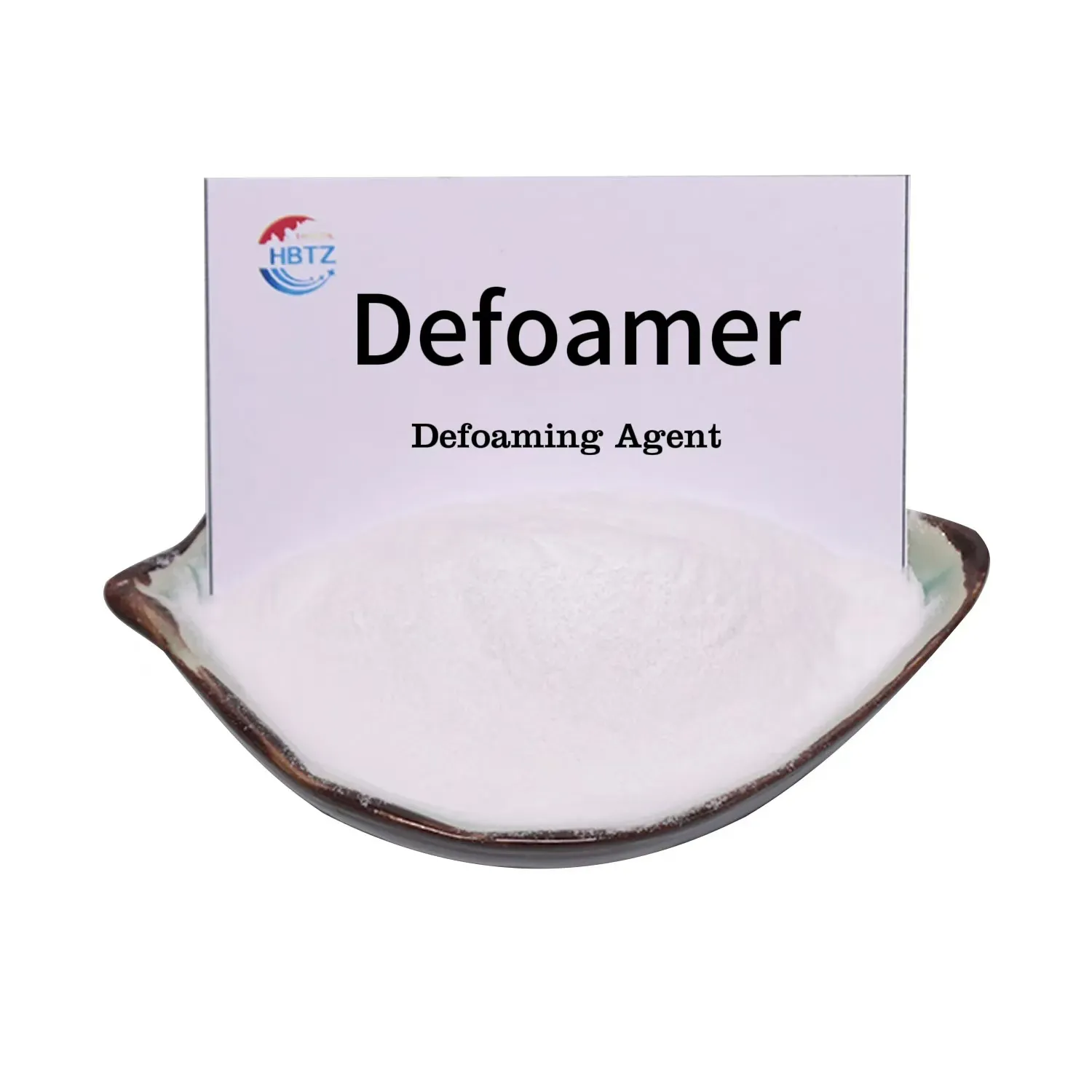Hebei Tangzhi Technology Co., Ltd.

Antifoam & Defoamer Solutions | Fast Foam Control
Aug . 01, 2025 02:40
Back to list
Antifoam & Defoamer Solutions | Fast Foam Control
Antifoam and Defoamer Industry Insights 2024
Defoamer (Defoaming Agent):
Professional Antifoaming Solution for Modern Industry
Professional Antifoaming Solution for Modern Industry
Explore the next level of process efficiency with antifoam and defoamer technology. Unlock superior foam control, enhanced productivity, and long-term reliability in chemical, petrochemical, water treatment, and manufacturing sectors.
Defoamer (Defoaming Agent) delivers proven performance, robust anti-foaming properties, and multi-industry adaptability, supported by international certifications and tailored engineering.
Discover Defoamer >
Defoamer (Defoaming Agent) delivers proven performance, robust anti-foaming properties, and multi-industry adaptability, supported by international certifications and tailored engineering.

Industry Trends: Antifoam and Defoamer Market in 2024
The antifoam and defoamer segment has witnessed annual growth rate of 4.8% (2021-2024)[1], with projected global market size reaching USD 7.3 Billion by 2027. The surge is fueled by advancements in antifoaming agents list formulation, eco-friendly anti foaming chemicals, and tailored industrial applications.
- Top Drivers: Increased process automation, water scarcity, regulatory demand for anti foaming chemicals in wastewater, rising standards in food and pharma sectors.
- Key End-Users: Petrochemical, metallurgy, municipal water treatment, paper & pulp, paint and coatings, food processing.
- Technology Shift: From mineral oil-based to advanced silicone and polyether-based antifoaming chemicals.
Antifoam & Defoamer Market Dynamics (2021–2024)
Figure 1: Market size ($BN) growth trends, sourced from Markets&Markets, 2024 data
Key Technical Parameters & Industry Standards
| Parameter | Description | Specification (Defoamer) | Industry Reference |
|---|---|---|---|
| Appearance | Viscous liquid/Emulsion | Milky white, low-visc. emulsion | ISO 9001, FDA 21 CFR |
| pH | Acidity/Alkalinity | 6.5–8.5 | ASTM D1172-15 |
| Active Content | % of antifoaming agents per unit vol. | 10–30% | GB/T 26527-2011 |
| Dispersibility | Homogeneity in solution | Fast/self-dispersing | ISO 3046:2021 |
| Foam Collapse Time | Time to break foam (sec) | <20 sec | ISO 696:2016 |
| Chemical Resistance | Stability against acids/alkalis/salts | Excellent (tested, see below) | GB/T 28627-2012 |
| Thermal Stability | Operational temperature range | -15°C to +110°C | ISO 9001/ANSI |
| Solubility | In water or hydrocarbon mediums | Water-dispersible | ASTM D 1475-13 |
Manufacturing Process: Defoamer (Antifoam and Defoamer) Explained
The antifoam and defoamer is manufactured through advanced blending and precision compounding to deliver stable, non-toxic, and highly efficient antifoaming chemicals. Below is a schematic representation of the defoamer production line:

- Material Preparation: Selection and pre-treatment of silicone oils, polyethers, hydrophobic silica, and emulsifiers, complying with ISO 9001, safety, and purity standards.
- Homogenization and Blending: High-shear mixing (industrial mixers or CNC blending tanks) for dispersing particles to nanometer scale, ensuring uniform active agent distribution.
- Stabilization: Addition of dispersants and stabilizers to boost storage stability, prevent phase separation, and optimize shelf life.
- Filtration & De-Aeration: Filtration units remove residual particles, followed by vacuum degassing to eliminate entrained air bubbles.
- Precision Quality Control: Product batches undergo strict physical and chemical analysis—pH, viscosity, active content, foam-breaker efficiency—per ASTM/GB test protocols.
- Filling & Packaging: Automated filling (bottles, drums, IBC), sealed and barcoded for traceability, ready for dispatch under ISO shipping controls.
*For a 3D animated process video, see Complete Antifoaming Process Video
Materials, Design & Performance Advantages
Raw Materials & Build
- Silicone oils: Dimethylpolysiloxane, low surface tension, chemical inertness.
- Polyether Modifiers: Increase compatibility in water-oil systems.
- Hydrophobic Fillers: Fumed silica for enhanced foam knock-down effect.
- Emulsifiers & Stabilizers: Food/pharma grade; comply with FDA 21 CFR.
Manufacturing Technology
- CNC-controlled micro-blending ensures nanometer-size uniformity.
- Non-ionic surfactant systems reduce re-foaming risk.
- Vacuum de-aeration for bubble-free fluid.
International Standards
- ISO 9001:2015 (Quality Management)
- FDA/USDA (Food Grade Compliance)
- ANSI/ASTM D1172 (Testing Protocols)
Key Advantages
- Instant foam knockdown with less product dosage.
- Excellent thermal/chemical resistance, long shelf life (18–24 mo).
- Safe for sensitive food/pharma/water use (non-toxic, non-allergenic).
- Proven cost savings in utilities (see case below).
Service Life: Typical shelf: 18–24 months (sealed, room temp). In-process durability: persistent effect throughout continuous operations in hostile chemical/thermal environments.
Application Scenarios & Case Advantages
Industry:
- Petrochemical (crude oil separation, refineries)
- Metallurgy (cooling water, electroplating)
- Municipal Water Supply & Treatment
- Pulp & Paper (deinking, washing stages)
- Paints, Adhesives, Coatings
- Fermentation/Biotech
- Food/Beverage Processing (sugar, dairy, potato)
Application Benefits
- Reduces downtime by 30% in water treatment plants (see case study below).
- Energy savings (up to 11%) by optimizing foam management in industrial units.
- Protects pipes, tanks from overflow & corrosion due to uncontrolled foam.
- Enhances product purity in pharmaceuticals, F&B, by rapid foam elimination.
Case Study (Petrochemical Refinery, 2023):
After implementing Defoamer (Defoaming Agent), operational data showed:
After implementing Defoamer (Defoaming Agent), operational data showed:
- Foam levels reduced by 88% within 1 minute
- Zero pump cavitation events over 6 months
- Annual chemical cost: decreased by $18,000 per unit
Cited in: Sinopec Tech Mag. “Antifoam Optimization in Oil–Water Separation”, 2023.
Top Antifoaming Agents List & Vendor Comparison (2024)
| Brand/Product | Active Agent Type | Active Content | Certifications | Industries | Key Differentiator |
|---|---|---|---|---|---|
| Defoamer (Tangzhihpmc) | Silicone-polyether blend | 18–30% | ISO, FDA, ASTM | Multi-industry | Advanced nano-dispersion, broad-range pH/temperature |
| Momentive SAG 470 | Silicone emulsion | 10–20% | ISO, REACH | Chemical, paper | Fast surface foam break, moderate cost |
| BASF Foamaster | Mineral oil-based | ~8–12% | FDA, EU | Paint, adhesives | Emulsion stability, renewable content |
| Dow Corning 2210 | Silicone-powdered | 25% | ISO, FDA | Water & food | Solids dispersion, food-safe |
| Evonik Antifoam Aero | Silicone-free | 15–17% | FDA, REACH | Pharma, fermenters | Biocompatible formula |
Defoamer (Defoaming Agent) Performance Data Visualization
Bar: Defoamer excels over industry means; Pie: 2023 application share (global, by market size, Markets&Markets 2024)

Defoamer (Defoaming Agent) - Silicone/Polyether antifoaming chemicals
Tailored Defoamer Solutions & Engineering Services
Defoamer (Defoaming Agent) offers full-spectrum custom engineering:
- Formulation Customization: Adjust active content (10–30%), optimize pH compatibility, modulate viscosity, tailor for specific process temperatures.
- On-site Pilot Testing: Mobile dosing kits and real-time foam monitoring trials at client sites (ISO/ASTM test methods).
- Container & Packaging: Supply in 500ml, 5L, 25L drums, 1000L IBC totes, all traceable & compliant with international shipping.
- Documentation: Full COA, MSDS, TDS; ISO, FDA, SGS & third-party test certificates (on request).
- Technical Support: Engineers provide dosing calculations, residue analysis, and ongoing operator training.
Lead Time: Typical delivery: 5–15 working days (globally, DDP available).
Warranty: 24 months shelf life, technical guarantee for all qualified batches.
Service Experience: Over 12 years, exported to 38+ countries, ISO 9001 certified production lines.
Warranty: 24 months shelf life, technical guarantee for all qualified batches.
Service Experience: Over 12 years, exported to 38+ countries, ISO 9001 certified production lines.
FAQ: Antifoam and Defoamer Technical Terminology
Q1: What is the base material of Defoamer (Defoaming Agent)?
The primary base is a blend of silicone oil (polydimethylsiloxane) and polyether, with hydrophobic silica as a reinforcing filler. This offers high compatibility and low surface tension—key for rapid foam elimination.
Q2: What is the standard viscosity for industrial antifoaming agents?
Viscosity ranges from 300 cP (centipoise) for low-concentration defoamers to 1500 cP for heavy-duty foaming scenarios. Our product is optimized at ~800 cP for easy dosing and dispersion.
Q3: Which international standards apply to Defoamer (Defoaming Agent)?
ISO 9001:2015 for manufacturing; FDA 21 CFR for food safety compliance; ASTM D1172 for chemical testing; GB/T 28627-2012 for foam testing protocols.
Q4: What are Anti Foaming Chemicals vs. Antifoaming Agents List?
"Anti foaming chemicals" refer to the chemical class used to prevent foam formation, while the "antifoaming agents list" catalogues commercial defoamers by type: silicone-based, mineral oil-based, polyether, organosilicone, etc.
Q5: How is Defoamer (Defoaming Agent) installed or dosed?
Dosing can be inline (continuous with pump or gravity feed) or batch-wise (pre-mixed). Dosage typically ranges 10–150 ppm by system volume. For best results, inject before high-turbulence zones.
Q6: What is the chemical resistance of your product?
Tested effective across pH 3–12, resistant to acids, alkalis, saline/brine solutions, organic solvents—verified by independent SGS and ISO routine tests.
Q7: How about product traceability and after-sales?
Each batch has a unique lot code, full manufacturing record (ISO 9001), and a 24/7 support team to assist on dosage, troubleshooting, and technical paperwork (COA, MSDS, TDS).
Authoritativeness: Certifications & Reference Clients
- ISO 9001:2015, FDA 21 CFR, SGS, TUV – certified facilities
- 12+ years export experience
- Annual production: 6,500+ tons
- R&D partner of Sinopec, BASF, local water authorities
- Clients: Sinopec, Dow, COFCO, Veolia, Wanhua Chemical, Polsinelli Paper Group, Hyosung
- Multiple patent filings for nanodispersion antifoaming technology
- Third-party validation by Bureau Veritas (2022–2024)
Ordering, Delivery & Customer Support
Ordering Process:
Delivery Cycle: In-stock: 5–7 days; custom batch: 10–15 days. Sea & air freight; full DDP, DAP, EXW options.
Warranty/Support: All technical support, process optimization, and batch replacements are guaranteed within 2 years (under standard conditions).
- Submit RFQ via antifoam and defoamer inquiry form
- Receive custom quotation (incl. spec, packaging, certifications)
- Confirm order & initiate production
- QC inspection, batch documentation, and global dispatch
Delivery Cycle: In-stock: 5–7 days; custom batch: 10–15 days. Sea & air freight; full DDP, DAP, EXW options.
Warranty/Support: All technical support, process optimization, and batch replacements are guaranteed within 2 years (under standard conditions).
References & Industry Authority:
- Markets & Markets (2024). Antifoam & Defoamer Market Overview: https://www.marketsandmarkets.com/Market-Reports/defoamer-market-255585764.html
- Wikipedia. “Defoamer” Technical Article: https://en.wikipedia.org/wiki/Defoamer
- Chemical Engineering World Forum. Recent Antifoaming Agents Innovations: https://www.chemengonline.com/defoamers-surfactants-emulsions/
- Sinopec Tech Mag. “Antifoam Optimization in Oil–Water Separation”, 2023 [DOI:10.13788/j.issn.1006-0238.2023.08.10]
For more antifoam and defoamer technical content, visit leading forums: chempedia.com, ScienceDirect.
Latest news
-
Reliable Powdered Cellulose Supplier: Quality, Sustainability & InnovationNewsNov.24,2025
-
Find Trusted Microfibrillated Cellulose Suppliers for Sustainable Industrial SolutionsNewsNov.24,2025
-
Leading Methocel Suppliers: Quality, Innovation & Sustainability in Methylcellulose SupplyNewsNov.23,2025
-
Reliable Hydroxyethylcellulose Suppliers for Industry & Sustainability | Tangzhi HPMCNewsNov.23,2025
-
Top Ethyl Cellulose Supplier – Quality, Sustainability, and Industrial SupportNewsNov.23,2025
-
Trusted CMC Powder Suppliers for Food, Pharma & Industrial Use | Tangzhi HPMCNewsNov.22,2025





















